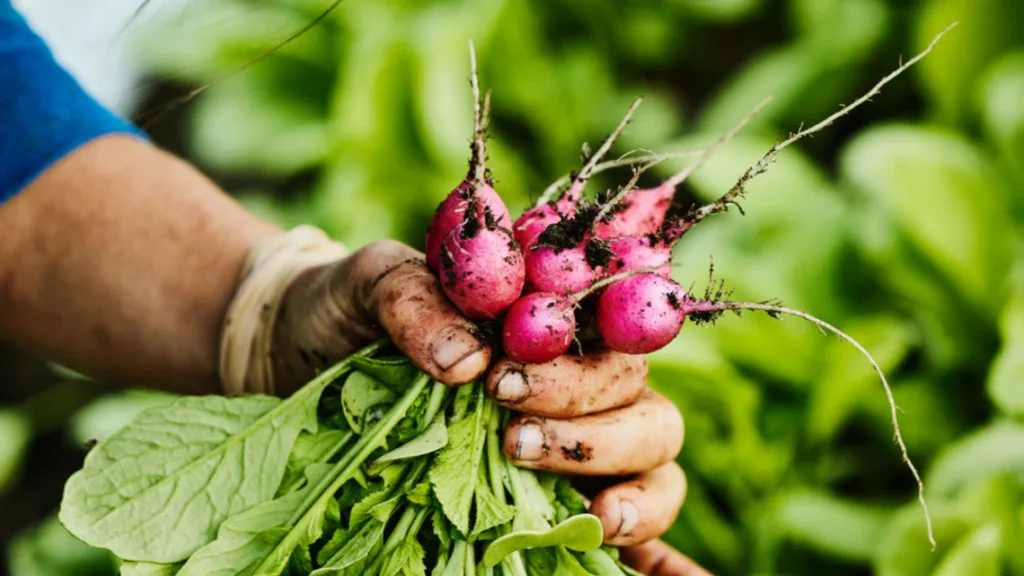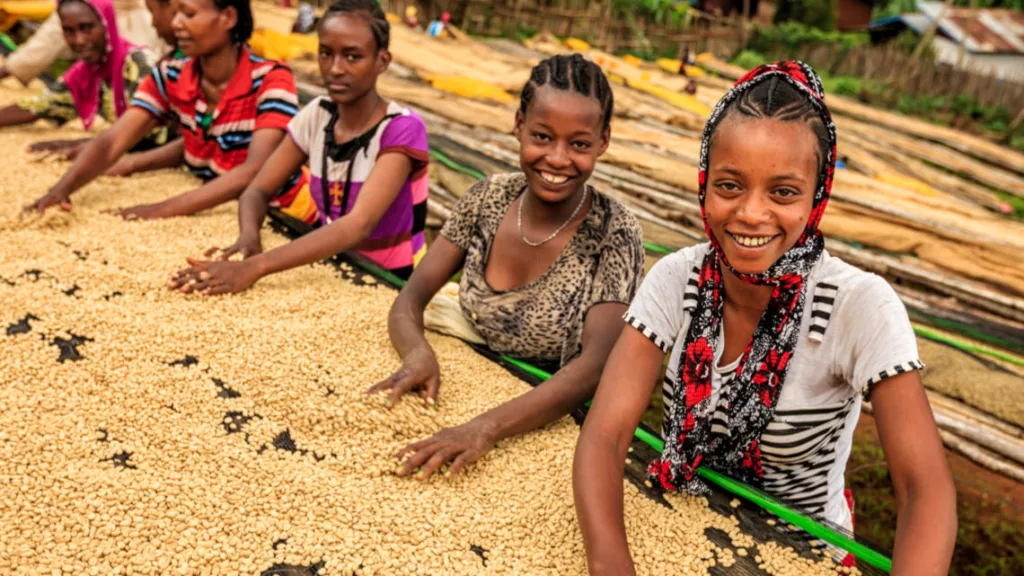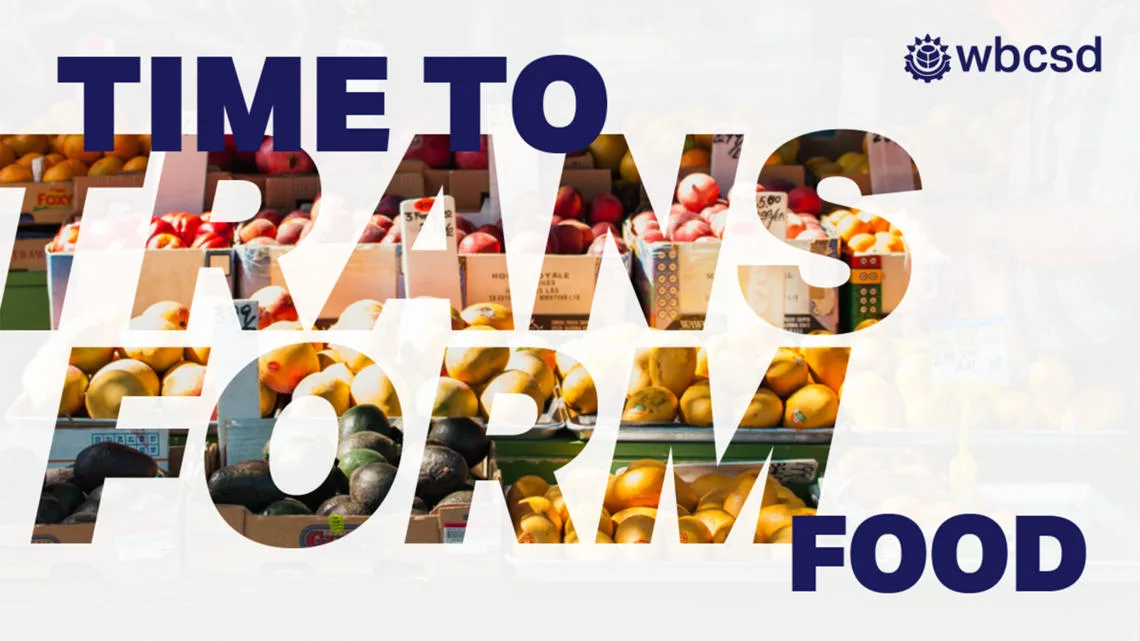Authors
Diane Holdorf
By Diane Holdorf, Managing Director of the Food & Nature Program, at the World Business Council for Sustainable Development (WBCSD)
Our world is facing three pressing global challenges: the climate emergency, nature in crisis and mounting inequality. Ensuring 9+ billion people can live well, within planetary boundaries, by mid-century requires urgent transformation of global economic systems. The food system is one of nine transformation pathways identified by WBCSD and leading companies that sits at the heart of the Vision 2050 framework. The pathways cover the areas of business activity that are essential to society and map out the societal needs that we need to deliver on, the transformations required to address the challenges we face, and the actions that business can take today.
Food fuels our bodies and plays a powerful role in human health, culture, productivity and potential. It is central to livelihoods, creating enjoyment, and connection to family, community and natural ecosystems on land and in water. But the food system is also contributing to the pressing global challenges. It contributes to approximately one-quarter of greenhouse gas (GHG) emissions, three-quarters of biodiversity loss, and is a leading cause of non-communicable disease adding to societal cost burdens through health care, stunting and malnutrition.
Our vision is for a food system that addresses these challenges and meets societal needs in 2050: “a regenerative and equitable food system producing healthy, safe and nutritious food for all.” This vision will require business to work to ensure that:
- everyone has access to nutritious and affordable food;
- sustainable production restores and safeguards nature;
- food is consumed sustainably; and,
- value chains are prosperous, equitable and free from human rights abuses.
To achieve a positive transformation of the global food system, change needs to come from all stakeholders. This includes business, which needs to deliver and drive the innovations and actions that will catalyze transformation within the system as a whole. Business is already contributing to the food systems discussion, from the farmers who produce food to those who process it and those who sell and market food to us – our food depends on the innovation, hard work and dedication of many.
WBCSD, with member companies and partners, is leading significant work towards food systems transformation. Big projects on Scaling Positive Agriculture, Equitable Livelihoods, Food Reform for Sustainability and Health (FReSH) and supporting advocacy are delivering impact at scale. Another example of WBCSD and members leadership is through the creation of the Private Sector Guiding Group (PSGG), a group of global and regional business organization platforms which helps represent the private sector in all its diversity. The PSGG helps drive business engagement in the UN Food Systems Summit (UN FSS) to process and facilitate business action in support of the Summit’s outcomes. The UN FSS presents a unique opportunity to accelerate private sector action to transform food systems and encourage more companies to engage.
About the Vision 2050 Food Transformation Pathway
Over the coming years, WBCSD will work with its members to drive critical transitions within the food system, guided by Vision 2050’s food transformation pathway. The pathway lays out a comprehensive series of transitions that we consider critical to the achievement of this vision for food: agriculture will need to become more productive, regenerative, and resilient, while our food system will also have to transform in such a way that it supports a healthy, productive, and well-governed ocean; diets will need to shift to become more balanced and optimized for health and environmental outcomes, and the world will need to transition towards a circular food system with zero loss and waste; companies along the food value chain will need to collaborate to ensure that value is shared fairly with farmers, helping to eradicate poverty and drive rural development; meanwhile, collaborative action to drive end-to-end transparency from farm to fork will be needed to help ensure responsible and sustainable sourcing.
To ensure that no time is lost and that business focuses on the actions it can take today, the pathway also identifies 10 prioritised action areas for business to focus on over the course of the next decade, that will accelerate the pace and scale of change. These action areas span innovative products, services, technologies and business models, as well as ways that companies can help create the right enabling conditions for change. They are not exhaustive, but cover the most urgent and important priorities in the crucial decade ahead. Vision 2050’s 10 business action areas for the Food pathway are:
- Adopt and disseminate agricultural and aquaculture practices that are resilient, regenerative, circular, and that produce higher yields with higher levels of nutrition.
- Evolve and invest in redesigned food product portfolios to reduce environmental externalities, provide healthier options, and maximize positive impacts on people and planet. In particular, drive R&D around protein substitution with a focus on disruptive technologies and re-imagined animal feed sources.
- Through marketing and education campaigns, shift consumer and employee behavior towards more healthy and sustainable food choices, and reduced food waste. Refrain from marketing unhealthy foods.
- Establish deforestation and land conversion-free food supply chains while also forming and joining global coalitions to invest in restoration efforts.
- Set targets, develop metrics, and implement practices and programs to minimize food waste across the supply chain. Reimagine food distribution systems that are built upon principles of circularity and reduce the level of packaging required to maintain quality and safety.
- Set science-based targets for reducing emissions from agricultural production and related land use change to establish a clear, accountable pathway to hold temperature rises to 1.5°C. Turn agriculture into a carbon sink.
- Engage with policymakers to reorient subsidies and regulations to incentivize sustainable agricultural practices, healthier consumption patterns, and reduced food loss and waste.
- Develop and improve internal policies and systems to perform human rights due diligence as set out in the UN Guiding Principles on Business and Human Rights and ensure human rights are respected across all food value chains globally.
- Collaborate to advance transparency and traceability mechanisms throughout the food value chain and drive open access to data.
- Ensure that value is shared equitably throughout the value chain with farmers and fishermen receiving their fair share.
The pathways all complement the Sustainable Development Goals, translating SDG ambitions and targets into clearly actionable areas of business activity.
VISION 2050 INSIGHT SERIES
This article is part of an ongoing insight series into WBCSD’s Vision 2050: Time to Transform.
Introduction: Julian Hill-Landolt, Director, Vision 2050, introduces the Vision 2050: Time to Transform insight series and provides an overview of the topics that will be covered.
Living Well: Filippo Veglio, Managing Director, People & Society, takes a deeper look at what it means to “live well” – a world in which everyone’s dignity and rights are respected, basic needs are met, and equal opportunities are available for all.
Living within Planetary Boundaries: Diane Holdorf, Managing Director of the Food & Nature Program, and Claire O’Neill, Managing Director of the Climate & Energy Program, take a deeper look at what it means to “live within planetary boundaries”.
Next up: Constant Van Aerschot, Director, WBCSD Asia Pacific, will offer a deeper look into Vision 2050’s connectivity pathway.
WBCSD news articles and insights may be republished in accordance with the Creative Commons Attribution-NonCommercial-NoDerivatives 4.0 International Public License, and in accordance with our Privacy Policy. All Content must be featured with due credits.
Outline
Related
Content

WBCSD joins the Nutrient Density Alliance
13 October, 2023

Meat and dairy analogues of the future call for a focus on affordability, innovative business models and a just transition
20 September, 2023

Business action to unlock the potential of African farmers – WBCSD’s takeaways from the AGRF Summit 2023
14 September, 2023

